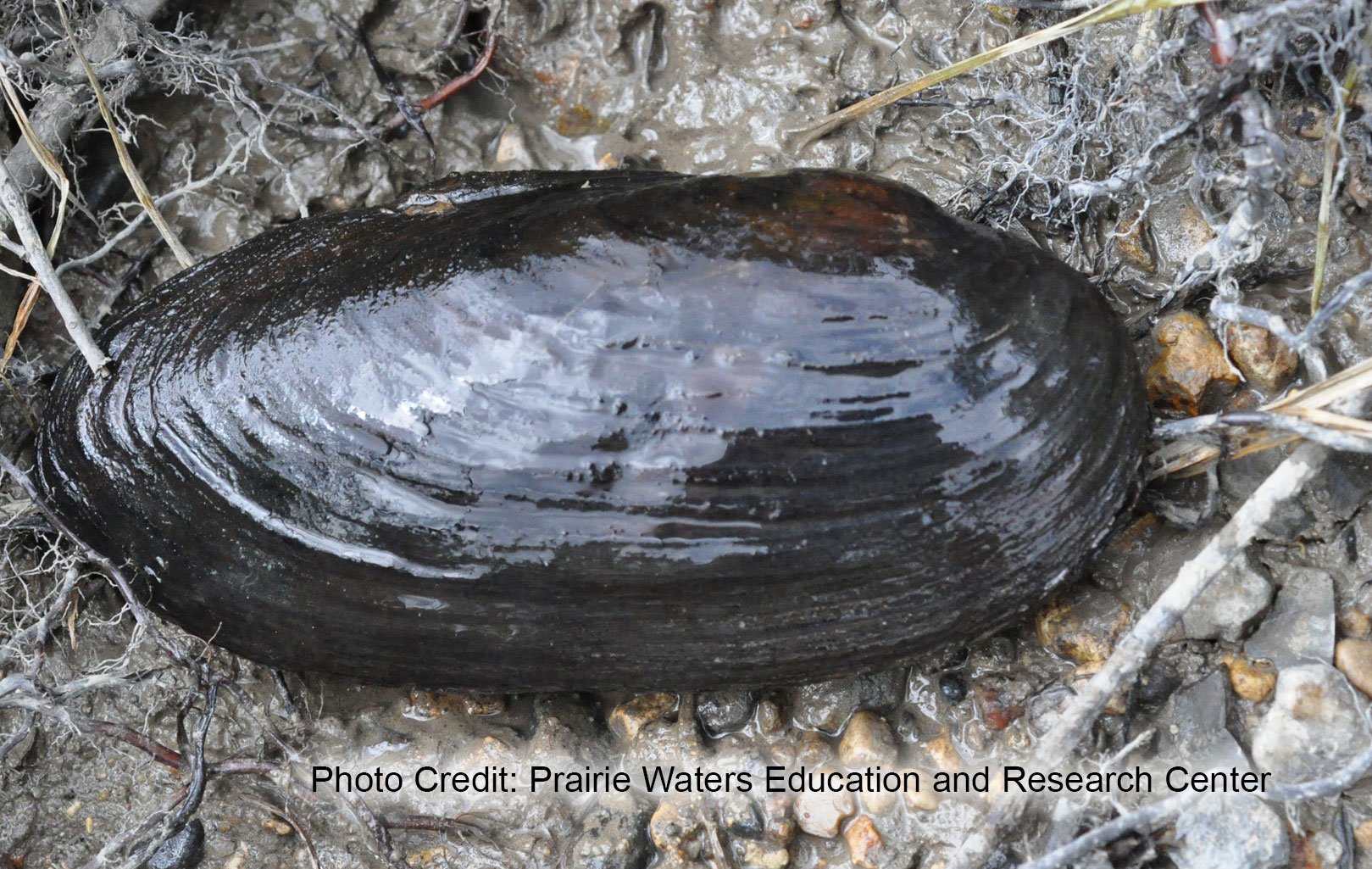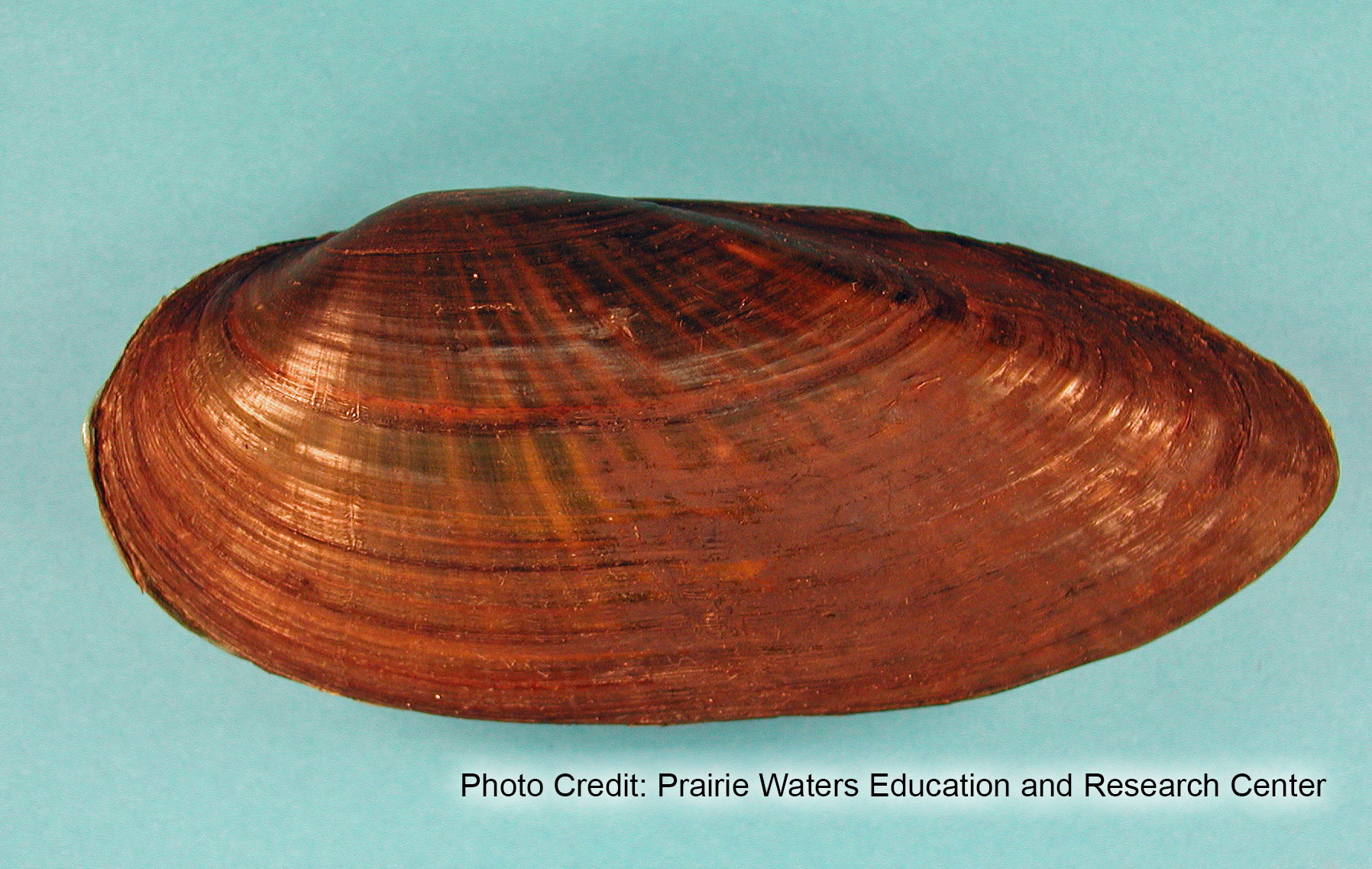
Black Sandshell
| Scientific Name | Ligumia recta |
|---|---|
| General Description | Shell elongated and generally flattened. This species can reach up to 4 ½ inches in length. Shell is smooth, shiny, and generally dark in color. Nacre is pink, purple, or white in coloration. |
| Status | Year-round resident. |
| Abundance | Rare. |
| Primary Habitat | Found in the Red River and lower Sheyenne River. Generally found in riffles or areas of swift current with a gravel or sand bottom. |
| Federal Status | None. |
| Reason for Designation | Changes in land use in and around the rivers it inhabits, most notably agriculture, and impoundment, have impacted this species. |
Images


(Photos courtesy of Prairie Waters Education and Research Center - Valley City University)
Locations and Conditions of Key Habitat
Preferred Habitat
Inhabit large to medium rivers nationwide but confined to large turbid rivers in North Dakota. Found in riffles and raceways in these rivers.
Key Areas and Conditions for Black Sandshell in North Dakota
Found in the in Red River north of the confluence with the Sheyenne River. Also found in the Sheyenne River from its confluence with the Red River to below Baldhill Dam.
Problems Which May Affect this Species
Habitat
Impoundment of the Red River and its tributaries have changed the flow regime and increased sediment deposits, making many areas in the river unsuitable to the Black Sandshell. Impoundments also block host fish movement. These fish are a necessary component of reproduction and dispersion of this species. Agricultural practices within the basin have reduced suitable habitat in the rivers. Runoff from treated fields into the river decreases water quality. Ditches used to drain wetlands contribute to agricultural run-off and sedimentation in the Red River and its tributaries.
Other Natural or Manmade Factors
Release of water from Devils Lake may negatively the water chemistry in the Sheyenne River.
Research and Survey Efforts
Current Research or Surveys
- No current research or survey efforts are on-going in this species range.
Previous Research or Surveys
- Cvancara conducted a state-wide survey of the mussels of North Dakota in 1978.
- The North Dakota Game and Fish Department revisited Cvancara’s sites in 1990.
- Valley City State University revisited Cvancara’s sites and surveyed additional sites in 2008.
- The NDDH conducted freshwater mussel surveys for state waters as a segment of its Index of Biotic Integrity (IBI) work.
Additional Research or Surveys Needed
- A monitoring protocol for mussel species has been developed for the North Dakota Game and Fish Department under the SWG program. Implementation of this monitoring protocol is a future goal.
Management Recommendations
- Develop buffers along riparian areas.
- Work with partners to reduce the use of chemical near waterways.
- Work with partners to reduce wetland drainage.
- Remove river impoundments where possible.
- Work with partners to maintain instream flows.
Monitoring Plans
- A monitoring protocol has been developed for the North Dakota Game and Fish Department under the SWG program. Implementation of this monitoring protocol is a future goal.
2005-2015 Progress
SWG T-24-R A Two Phase Population Survey of Mussels in North Dakota Rivers provided important information on the distribution of this species. Work to implement a monitoring protocol for mussels species will is a goal of the revised Wildlife Action Plan.

Note: A listing of works consulted when compiling the information on this page may be found in the 2015 State Wildlife Action Plan.
